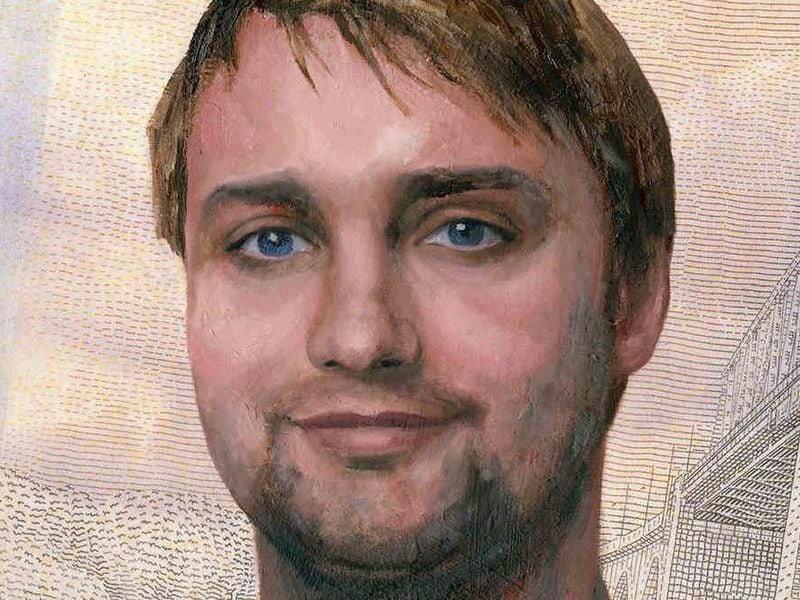‘Get a Horse!’: What Crypto Can Learn From Early Automakers’ Struggle for Acceptance
A fascinating time capsule came across my desktop this week. Originally published in 1930, this Saturday Evening Post essay by automotive pioneer Alexander Winton recounts his early efforts, beginning in the 1890s, to convince the public that the “horseless carriage” was the future.
Winton was a Columbus, Ohio-based bicycle manufacturer who turned to developing cars, and by 1898 completed one of the first commercial sales of an automobile in the United States. That vehicle is now in the collection of the Smithsonian Institution.
This is an excerpt from The Node newsletter, a daily roundup of the most pivotal crypto news on CoinDesk and beyond. You can subscribe to get the full newsletter here.
Winton’s story is fascinating in itself, and also offers broader insights into how new technologies develop and spread. The parallels to challenges faced by crypto developers are particularly uncanny: Winton describes facing down endless mockery, fraudulent competitors, the hostility of banks – and a case of automotive “patent trolling” that calls to mind a particularly notorious crypto figure.
These common threads between the development of the automobile and of cryptocurrency and blockchain technology aren’t simply a cosmic coincidence. The same challenges have accompanied many modern innovations, thanks above all to the way capitalist investment and speculation shape human behavior.
‘Dishonest practices did much harm when support was most needed.’
Most notable in Winton’s account is the difficulty he found separating his real (and ultimately very successful) auto company from both competitors with flawed ideas, and from outright frauds.
The well-intentioned bad ideas for cars are fascinating to look back on. One early automaker built a literal mechanical horse, which rode on a single wheel and attached to buggy shafts just like a real horse. It was guided not by a steering wheel, but with reins attached to the “mouth” of the motorized stallion. Other early experimental cars ran on compressed natural gas (yikes), steam, compressed air and even, yes, electricity.
These were honest efforts that failed thanks to technological flaws or market mismatches. They parallel a variety of early digital cash efforts, from Liberty Reserve through Colored Coins on Bitcoin – useful iterations that didn’t become long-term functional products.
(Winton also refers to a late 19th century technology magazine called “The Horseless Age.” These lunatics dared to start a publication about a transformative technology that barely existed, and … well, you can draw your own parallels.)
An even more intriguing and perhaps surprising parallel in Winton’s account, though, is the huge threat that fraudulent operators posed to legitimate early auto manufacturers. In autos, as in crypto, this often took the form of investment fraud by fly-by-night operators who capitalized on a speculative frenzy to fleece the naïve and unlucky.
“We had to … fight the wildcat automobile companies on the outside,” Winton wrote of those early days. “It was difficult for the public to distinguish between the genuine and the ephemeral, and there are towns that can still [in 1930] point to windowless factories that were built [in the 1890s] from the stock sold by glib promoters, but which never manufactured more than two or three cars.”
Winton claims that more than 500 automobile companies “came in and went out” in the early years of the industry. That incredible churn, too, sounds more than a little familiar.
‘To advocate replacing the horse marked one as an imbecile.’
Aside from diverting investment capital from better projects, these frauds fed skepticism of the very idea of the automobile. Not unlike the way crypto critics will often point to PayPal or Venmo as perfectly acceptable digital payments tools (pro tip: they’re not), automobile skeptics were just fine with existing transportation technology: horses and trains.
Winton cites a reporter named E.P. Ingersol, who argued that the idea that automobiles would compete with trains for long-distance travel “is visionary to the point of lunacy.” That comment was made in response to the truly unhinged 1899 proposal of a bus line between Chicago and St. Louis.
Winton, already a successful bicycle manufacturer when he started tinkering with cars, also got heat from his own banker. The financier told him, “You’re crazy if you think this fool contraption you’ve been wasting your time on will ever displace the horse.”
To try and make his case, Winton cited inventor Thomas Edison’s opinion that automobiles would “add to the general wealth” by making commerce more efficient. The banker, displaying an all too familiar mindset, dismissed Edison’s comments as “just another inventor talking.”
‘If we worked out a good idea, we loaned that.’
A final parallel will also be striking to those who follow the crypto industry closely. Winton describes a familiar environment of collaboration between very early automobile makers, including his own generous aid to the young Henry Ford in designing a steering wheel.
“Lawyers have tried to argue me into bringing suits for infringements,” Winton recounts, “But it so happened we pioneers always worked together. We loaned ideas. We loaned tools. We loaned patents.”
That ethos has since been formalized in the software world through open-source licensing. But as Winton and his contemporaries found out, not everyone is inclined to share and share alike. It seems those who fail to turn ideas into successful products are particularly inclined to get selfish with the ideas themselves, turning into parasitic “patent trolls.”
Winton recounts the tale of one George Baldwin Selden, who was granted a patent covering “the essential principles of an automobile” in 1879. After failing for nearly two decades to actually create a product, Selden partnered with an investor in 1899 to begin a campaign of lawsuits against actual manufacturers, including Winton himself. Ultimately several manufacturers had to pay licensing fees to parties who contributed nothing meaningful to their creations.
Currently Craig Wright, whose claims to be the inventor of Bitcoin have been widely discredited, seems poised to undertake a similar campaign of patent enforcement against more successful blockchain projects. Thankfully, Wright’s abysmal track record in court may mean this is a minor threat.
In Winton’s case, the licensing payments lasted only a few years, as the real innovators moved away from the static ideas controlled by Selden and his partner. Real blockchain innovators will leave trolls, skeptics and fraudsters in their dust just as surely.









